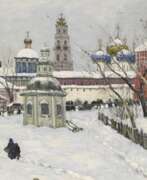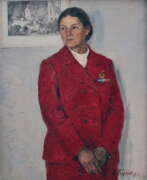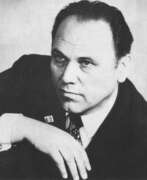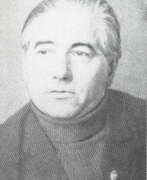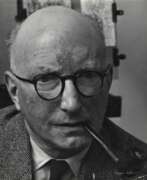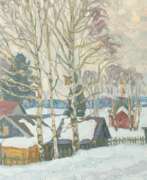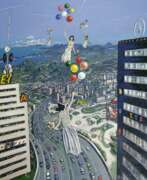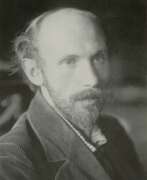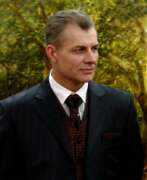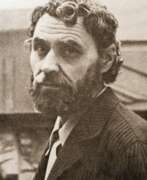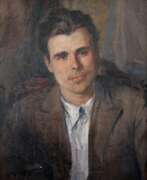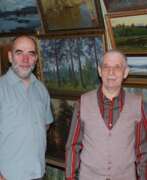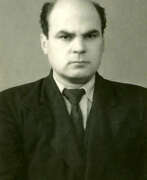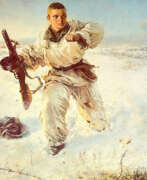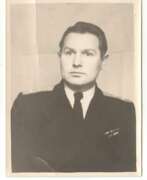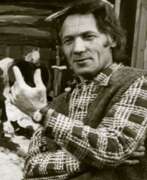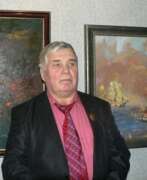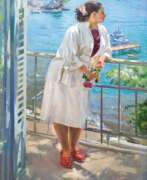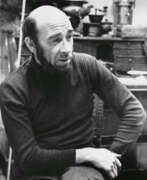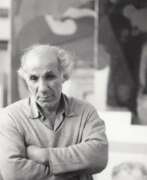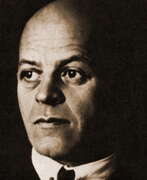Landscape painters Socialist realism
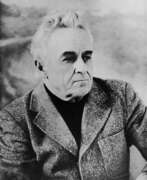

Alexander Grigorievich Maksymenko (Russian: Александр Григорьевич Максименко) was a Soviet and Ukrainian painter of the second half of the twentieth and early twenty-first centuries. He is known as a painter, graphic artist, watercolorist, and art historian.
Alexander Maksymenko worked in the genres of still life, landscape, portrait, as well as in genre painting. His genre works cover themes of collective farm life, including "Masters of the Land" and "Innovators of Collective Farm Fields". For the latter work he received the Stalin Prize. The master actively participated in exhibitions in Ukraine and abroad. His works are in the National Art Museum of Ukraine, the Museum of the History of Ukraine in World War II, as well as in other art museums and private collections.
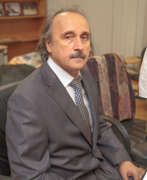

Sultan Shamsutdinovich Abaev (Russian: Султан Шамсутдинович Абаев), a Chechen and Russian artist born on November 1, 1954, in Khaidarkan, Soviet Union, is celebrated for his distinctive contributions to landscape art. A member of the Artists Unions of Saint Petersburg and the Chechen Republic, Abaev's work exemplifies his profound connection to his cultural roots and the rich landscapes that inspire him.
Educated at the prestigious Repin Institute of Painting, Sculpture, and Architecture in Saint Petersburg, Abaev has been honored multiple times for his artistic achievements, including receiving the title of Honored Artist of the Russian Federation. His works have been internationally recognized, finding places in private collections across countries such as Germany, the United States, and Japan.
Abaev's career also includes time spent abroad in Sri Lanka and South Korea from 1991 to 1993, where he expanded his artistic horizons and produced a series of paintings influenced by these experiences. Today, his works are sought after by collectors, especially those interested in landscapes and cultural narratives embedded in art.
Stay updated on exhibitions and sales related to Sultan Shamsutdinovich Abaev's enchanting landscapes by signing up for our exclusive alerts. These updates are essential for collectors and art connoisseurs interested in owning a piece of Chechen and Russian art history.
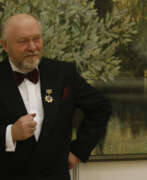

Mikhail Georgievich Abakumov (Russian: Михаил Георгиевич Абакумов) was a Russian artist, celebrated for his diverse artistic contributions and his deep connection to his homeland, Kolomna. Born in 1948, Abakumov became a prominent figure in the Russian art scene, recognized as a People's Artist of Russia and a dedicated teacher and community leader in Kolomna.
Abakumov's artistic oeuvre includes industrial and genre canvases, evocative landscapes, and intimate portraits, which are held in high esteem across Russia and in private collections worldwide. Notable works like "Metallurg" (1974) and "Spring Morning" (1996) showcase his ability to capture the essence of Russian life and landscapes. His art has been exhibited extensively within Russia and internationally, including over thirty solo exhibitions since 1979, contributing significantly to the cultural tapestry of the Soviet and post-Soviet periods.
His works are part of prestigious collections, including the State Tretyakov Gallery, and have been featured in various museums across cities like Moscow, St. Petersburg, and internationally.
For those interested in exploring Russian art and the legacy of Mikhail Georgievich Abakumov, signing up for updates on exhibitions and sales of his artworks can provide valuable insights and opportunities. Join our community to stay informed about events and auctions featuring Abakumov's remarkable works.


Victor Ashotovich Abramyan (Russian: Виктор Ашотович Абрамян) was a Soviet and Russian artist of the second half of the twentieth and early twenty-first centuries. He is known as a painter, a representative of the Leningrad school.
Victor Abramyan created portraits, landscapes, still lifes and genre paintings. He participated in exhibitions from the early 1970s in Leningrad. Among his famous works are "Blockade everyday life", "Still Life with a Centennial", "Leningrad. 1942. Women on Guard in the besieged city", "Young Guests" and others.
Abramyan's works are in museums and private collections in Russia and many other countries.
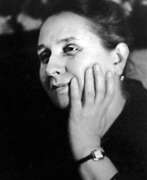

Taisia Kirillovna Afonina (Russian: Таисия Кирилловна Афонина) was a Soviet artist of the second half of the twentieth century. She is known as a painter, graphic artist, representative of the Leningrad school.
Taisia Afonina participated in exhibitions since 1940, creating portraits, landscapes, genre compositions, still lifes and etudes. At the beginning of her career she was interested in military subjects, and then delved into the genre of portraiture and lyrical landscape. Her style is characterized by tonal painting, the rendering of light and air environments and subtle coloristic combinations. In the 1980s she preferred the watercolor technique, painting flowers such as roses, daisies and tulips. Her works are in museums and private collections in Russia and other countries.
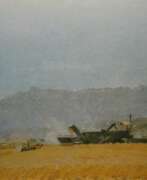

Sabyrbek Mambetsadykovich Akylbekov (Russian: Сабырбек Мамбетсадыкович Акылбеков) was a Soviet Kyrgyz artist of the mid-twentieth century. He is known as one of the first professional Kyrgyz painters in the USSR.
Sabyrbek Akylbekov became famous for his lyrical emotional landscapes. He made a significant contribution to the development of Kyrgyz fine arts through his creative, pedagogical and public activities. His works have been exhibited at many levels, including republican, all-Union and international exhibitions.
The master's works can be found in the Kyrgyz National Museum of Fine Arts named after G. Aitiev, the State Tretyakov Gallery and in museums of the CIS countries.


Pyotr Filippovich Alberti (Russian: Пётр Филиппович Альберти) was a Soviet and Russian artist of the second half of the twentieth century. He is known as a painter, a representative of the Leningrad school.
Pyotr Alberti created portraits, landscapes, genre paintings. He actively exhibited since 1951 in Leningrad, demonstrating his works along with the masters of his time. The artist had a broad writing and bright coloring, expressive stroke and used various techniques. He paid special attention to the study of nature. In the late period of his career, he became fond of still life paintings with favorite motifs such as peonies and watermelons.
Alberti's works are preserved in museums and collections around the world.
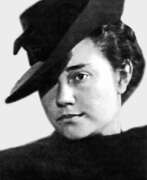

Evgenia Petrovna Antipova (Russian: Евгения Петровна Антипова) was a notable Russian painter, graphic artist, and art teacher. She stood out for her genre compositions, portraits, landscapes, and still lifes, primarily utilizing oils and watercolors. Evgenia Antipova's works often depicted apple orchards and Crimean landscapes, showcasing her profound connection to nature and her ability to capture its essence.
Evgenia Antipova's education at the prestigious Repin Institute of Arts shaped her artistic journey, leading to a career enriched with personal exhibitions and a significant presence in the art community. Not only did her artworks gain recognition in Russia, but they also found their way into international collections and exhibitions, notably in France, Germany, the United States, and the United Kingdom.
Throughout her career,Evgenia Antipova was an active participant in various significant exhibitions, displaying her works alongside other renowned artists. Her contributions to the art world were recognized with personal exhibitions in Saint Petersburg and inclusion in art auctions and exhibitions abroad.
Evgenia Antipova's paintings are part of prestigious collections, including the State Russian Museum, and continue to be celebrated in art museums and private collections globally. Her legacy as a prominent figure in the Leningrad School of painting endures, captivating art enthusiasts and collectors with her vivid and emotionally resonant works.
For those interested in Russian art, particularly the Leningrad School of painting, Evgenia Petrovna Antipova's oeuvre offers a rich exploration of genre compositions and landscapes, reflecting the artistic vibrancy of her era. Collectors and art experts are encouraged to delve into her works and consider signing up for updates on exhibitions and sales featuring her paintings.
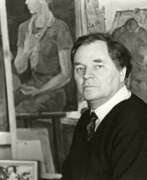

Fyodor Vasilievich Antonov (Russian: Фёдор Васильевич Антонов) was a Soviet and Russian artist of the twentieth century. He is known as a painter, graphic artist, textile artist, teacher, and professor.
Fyodor Antonov created landscapes, portraits and thematic compositions. In his genre works he immortalized the life and life of Soviet youth, as well as the formation of industry in the USSR. During the Great Patriotic War, the artist created portraits of heroes, as well as posters with a simple and direct pictorial form. Antonov's works are in various museum collections, including the Tretyakov Gallery, the Russian Museum and many private collections.


Pyotr Yakovlevich Anurin (Russian: Петр Яковлевич Анурин) was a Soviet and Russian artist of the second half of the twentieth century. He is known as a painter, author of lyrical landscapes, often depicting the architecture of ancient Russian cities.
Pyotr Anurin was nicknamed "spring artist" by his contemporaries for his subject matter, style and technique of painting. Spring was a special time for the master, during this period he created many canvases, such as "Spring", "The Last Snow" and others. The main theme of his works in the last years of his life was the Central Russian landscape.
The artist's works are in various art galleries and private collections in many countries, including Russia, England, Germany, France, Israel and China.
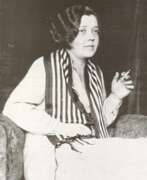

Zinaida Antonovna Astapovich-Bocharova (Russian: Зинаида Антоновна Астапович-Бочарова) was a Russian, Soviet and Belarusian artist of the twentieth century. She is known as a painter, graphic artist and teacher.
Zinaida Astapovich-Bocharova worked in the genres of portrait, landscape, propaganda poster, as well as book illustration - mainly for fairy tale books. She painted in watercolor, oil, pencil, charcoal, gouache, and pastel. Much of her work from the 1930s and 1940s was lost during the evacuation of the artist from besieged Leningrad.
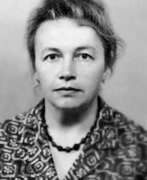

Irina Mikhailovna Baldina (Russian: Ирина Михайловна Балдина) was a Soviet and Russian artist of the second half of the twentieth and early twenty-first centuries. She is known as a painter, a representative of the Leningrad school.
Irina Baldina participated in exhibitions in Leningrad since 1952. Her work covered a variety of genres, including portraits, landscapes, still lifes and genre compositions. From 1960 to 1980, her works were characterized by themes of modernity, nature and people of Zaonezhye. Her style was characterized by broad brushstrokes, decorative and mastery in conveying the colors of northern nature.
Her works are in museums and private collections all over the world, including Russia, France, USA, Japan and other countries.
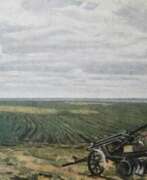

Vasily Nikolaevich Basov (Russian: Василий Николаевич Басов) was a Soviet artist of the mid-twentieth century. He is known as a painter, graphic artist, and representative of socialist realism in art. His oeuvre includes landscapes, portraits and genre paintings, with a special focus on rural subjects.
Since 1943 Vasily Basov actively participated in exhibitions, both national and international. His works have been exhibited in various countries, including Poland, China, Bulgaria and Romania.
Basov's works are in the collections of the State Tretyakov Gallery, the State Art Museum of the Altai Territory and other museums, as well as in private collections.
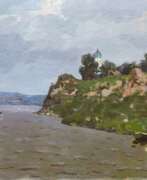

Yakov Tarasovich Besperstov (Russian: Яков Тарасович Бесперстов) was a Russian Soviet artist of the second half of the twentieth century. He is known as a painter, muralist, representative of the Leningrad school of painting.
At the initial stage of his career, Yakov Besperstov worked in the field of monumental and decorative painting, participating in the painting of various buildings. Later he moved to easel painting, creating portraits, genre paintings, as well as urban landscapes. His works were exhibited at exhibitions from the late 1950s and were appreciated by leading artists of Leningrad. The master traveled extensively throughout various regions of Russia and other countries, including France.
His works are in museums and private collections in various countries, including Russia, France, Belgium, Germany, Spain and Italy.
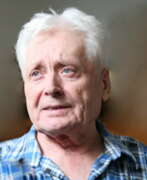

Vasily Pavlovich Borisenkov (Russian: Василий Павлович Борисенков) was a Soviet and Russian artist of the second half of the twentieth and early twenty-first centuries. He is known as a painter and teacher, a representative of the Leningrad school of painting.
Vasily Borisenkov actively participated in Leningrad art exhibitions since 1954, was the author of genre and battle paintings, landscapes and portraits. Among his famous works are the paintings "Difficult Conversation", "Spring", "Strelna. The Beginning of Summer" and many others. The master's works are in museums and private collections both in Russia and abroad.
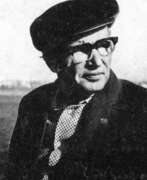

Nikolay Stepanovich Borovsky (Russian: Николай Степанович Боровский) was a Soviet Ukrainian artist of the second half of the twentieth century. He is known as a painter and teacher.
Nikolay Borovsky became famous for his portraits, landscapes and still lifes, as well as genre paintings. Some of his works were characterized by extraordinary realism. Since the early 1960s, he actively exhibited his works and in 1964 joined the Union of Artists of the USSR. For his painting "Worker. Year 1928" he received the prize of the Union of Artists of the Ukrainian SSR.
The master created a significant number of works that are in private and public collections, including a gallery of portraits of participants in the defense and liberation of Dnepropetrovsk.
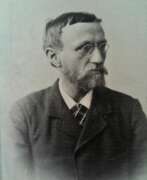

Hans Andersen Brendekilde, born Hans Andersen, was a Danish impressionist painter and representative of the Socialist Realist style.
Hans was a distant relative of the famous storyteller Hans Christian Andersen and also from a very poor family. However, his abilities were noticed, and he was admitted to the Royal Danish Academy of Fine Arts in Copenhagen, from which he graduated with honors, becoming a sculptor. However, Hans immediately began to paint, and depicted the harsh conditions of life in rural Denmark between 1880 and 1920. This was the beginning of the social realist style.
In 1884 he was living in Copenhagen with his friend, the painter Laurits Andersen Ring (1854-1933), at which time Hans took a second surname, Brendekilde, to avoid confusion.
Brendekilde was a committed socialist and produced many paintings depicting poor people working in the fields or in their homes at tragic moments in life. His most famous painting is The Weary One, which he completed in 1889. Through his work, Brendekilde had a great influence on many of his contemporaries, including Edvard Munch.
The talented and versatile artist also worked as an illustrator and gave a movement to arts and crafts in Denmark. Working for many years in the famous ceramics factory of Herman A. Koehler, he attracted other artists to this activity. And at the end of his life, the artist began to paint more positive pictures: flowers, playing children, fields under the sun.
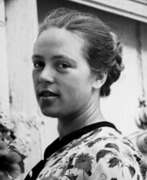

Zlata Nikolaevna Byzova (Russian: Злата Николаевна Бызова) was a Soviet and Russian artist of the second half of the twentieth and early twenty-first centuries. She is known as a painter, a representative of the Leningrad school, famous for her genre compositions, portraits, landscapes and studies from life.
Zlata Byzova achieved particular success in provincial portrait-types and Old Ladoga sketches of the 1960s-1970s. Her works were successfully presented at exhibitions and auctions of Russian painting in France in 1989-1992.
The artist's works are in museums and private collections in Russia, Finland, Germany, France and other countries.


Leonid Ivanovich Chernov (Russian: Леонид Иванович Чернов) was a Soviet Ukrainian artist of the second half of the twentieth century. He is known as a painter, graphic artist and teacher.
Leonid Chernov created in various genres, including landscape, still life and genre painting. He has participated in numerous exhibitions since 1945. His work was inspired by business trips to India, Afghanistan, Bulgaria and Cuba. Notable works include cycles of landscapes "Across Ukraine", etchings "In Folk Bulgaria", drawings dedicated to Ukrainian folk songs and poems by Soviet poets.
Chernov nurtured a galaxy of Ukrainian artists and played an important role in the development of the Ukrainian art community.


Prunella Clough was a prominent British artist. She is known mostly for her paintings, though she also made prints and created assemblages of collected objects. She was awarded the Jerwood Prize for painting, and received a retrospective exhibition at Tate Britain.
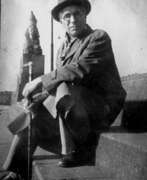

Rudolf Rudolfovich Frentz (Russian: Рудо́льф Рудо́льфович Фре́нц) was a Soviet and Russian painter, watercolorist, graphic artist, and art teacher, known for his contributions to the Leningrad School of Painting. Born on July 23, 1888, in Marienburg, a suburb of Saint Petersburg, he studied at the Imperial Academy of Arts under Vasily Savinsky and Nikolai Samokish. Frentz's early work focused on battle scenes, which became a hallmark of his style.
Frentz's work is celebrated for its dynamic composition and attention to historical detail, particularly in his depictions of military scenes. He was a member of the Leningrad Union of Artists and was deeply involved in the artistic community of Leningrad. His paintings, which often portrayed the heroism and struggles of Soviet soldiers, were exhibited in numerous prestigious shows and galleries throughout his career.
Notable works by Frentz include paintings like "Battle of Borodino" and "Storming of the Winter Palace," which are admired for their dramatic intensity and historical accuracy. His legacy continues to be honored in Russian art history, with his works held in collections such as the State Russian Museum and the Tretyakov Gallery.
Stay updated on new product sales and auction events related to Rudolf Rudolfovich Frentz by signing up for our updates. This subscription will only notify you of relevant sales and events.
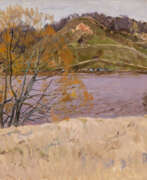

Yakov Andreevich Golubev (Russian: Яков Андреевич Голубев) was a Soviet artist of the mid-twentieth century. He is known as a painter, a representative of the Leningrad art school.
Yakov Golubev began participating in exhibitions while still studying at the painting faculty of the Leningrad Institute of Painting, Sculpture and Architecture. He became famous for his lyrical landscapes. Among his famous works are the paintings "Quiet Day", "Wicket Gate", "Late Autumn" and others.
The master's works are in museums and private collections all over the world, including Russia, Japan, Italy, Germany and France.


Vladimir Alexandrovich Gorb (Russian: Влади́мир Алекса́ндрович Го́рб) was a Soviet Russian artist, renowned for his versatile talents in painting, graphic design, and art education. Born on December 31, 1903, in Odessa, Russian Empire, Gorb carved a niche for himself in the Leningrad art scene, contributing extensively to its richness and diversity.
Gorb's education at the Leningrad VKHUTEIN under influential teachers like Alexander Savinov and Kuzma Petrov-Vodkin equipped him with a formidable artistic foundation, which he expanded upon throughout his career. His works, characterized by their vivid portrayal of everyday life and the natural world, were regularly featured in prominent exhibitions from as early as 1925.
Over the years, Gorb became a significant figure in the Soviet art community, not only through his artwork but also through his role as a professor at the Repin Institute of Arts. His commitment to art education shaped many future artists. His works are notable for their depth and complexity, encapsulating the Soviet ethos with a unique blend of realism and personal expression.
For those interested in exploring the works of Vladimir Gorb further or acquiring pieces for their collections, more information is available through dedicated art galleries and historical art resources online. For updates on exhibitions and available works of Vladimir Gorb, you can subscribe to our newsletter, ensuring you're informed about new sales and auction events related to this distinguished artist.
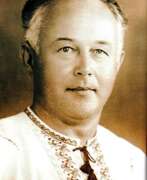

Pavel Matveyevich Gorobets (Russian: Павел Матвеевич Горобец) was a Soviet Ukrainian artist of the mid-twentieth century. He is known as a painter, landscape painter who worked early in his career as an artist-journalist.
Pavel Gorobets became famous for the lyrical style of his landscapes depicting the nature of Poltava region. His works are characterized by subtle lyricism, penetration and deep affection for his native nature. Critics called the artist a "master of landscape miniature". His works are in museums of various Ukrainian and Russian cities, as well as in private collections.
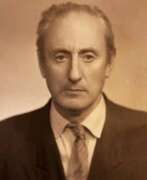

Abram Borisovich Grushko (Russian: Абрам Борисович Грушко) was a Soviet artist of the mid-twentieth century. He is known as a painter and teacher, a representative of the Leningrad art school.
Abram Grushko specialized in landscapes and genre compositions, with a special emphasis on Zaonezhye and its inhabitants. In his art he moved from the traditional plein air to decorative and graphic techniques, close to the "severe style", with characteristic clarity of silhouettes and rich colors. The master also taught at the Leningrad Higher Art-Industrial School.
His works can be found in museums and private collections all over the world, including Russia, Great Britain, Germany, France, Israel and other countries.
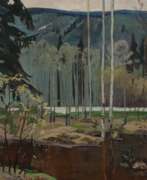

Evgeny Ivanovich Gudin (Russian: Евгений Иванович Гудин) was a Soviet artist of the mid-twentieth century. He is known as a painter and teacher.
Evgeny Gudin specialized in creating landscapes, mostly in oil. He sought to use landscape to express the complexities and interconnectedness of man and nature. His artistic style was characterized by monumentality, rhythm and color saturation. He created many unique works that have been presented at various exhibitions and are now kept in museums in Russia and abroad, including Yekaterinburg, Moscow, Perm, Tyumen and other cities, as well as in private collections.
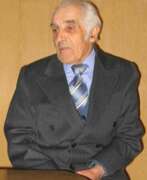

Konstantin Ivanovich Khoroshevich (Russian: Константин Иванович Хорошевич) was a Soviet and Belarusian artist of the second half of the twentieth and early twenty-first centuries. He is known as a painter who worked in the genres of landscape, portrait, still life.
Konstantin Khoroshevich during his career created more than 500 paintings, reflecting among other things significant events in the history of Belarus. In the last years of his life he worked on creating a gallery of portraits of cultural figures, his famous compatriots.
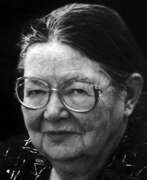

Maya Kuzminichna Kopitseva (Russian: Майя Кузьминична Копытцева) was a Soviet and Russian artist of the second half of the twentieth and early twenty-first centuries. She is known as a painter, a master of still life, landscape, portrait and genre composition, a representative of the Leningrad school of painting.
Maya Kopitseva gained recognition in part due to her fine sense of color and ability to convey beauty and poetry in ordinary objects and phenomena. Her painting evolved from capturing immediate impressions to a more figurative interpretation of the material world.
In the late 1980s and early 1990s her works were successfully presented at exhibitions and auctions of Russian painting L' Ecole de Leningrad in France.
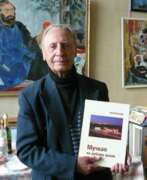

Pyotr Gurievich Korostelyov (Russian: Пётр Гурьевич Коростелёв) was a Soviet and Russian artist of the second half of the twentieth and early twenty-first centuries. He is known as a painter, a representative of the Leningrad school.
Pyotr Korostelyov participated in the Great Patriotic War, after demobilization he graduated from the Leningrad Art and Graphic School and taught art, continuing to be actively engaged in creative work. His works cover a variety of genres, including portraits, genre compositions, still lifes and landscapes. For his contribution to art he was awarded the honorary titles "Honored Artist of the Russian Federation" and "People's Artist of the Russian Federation". The master's works are in various museums and private collections in Russia and abroad.
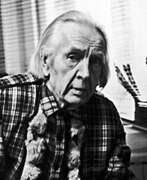

Alexander Petrovich Koroviakov (Russian: Александр Петрович Коровяков) was a Soviet and Russian artist of the second half of the twentieth century. He is known as a painter, a representative of the Leningrad school.
Alexander Koroviakov worked in the genres of portraiture, landscape, genre compositions and still life. His artistic vision was emphasized on the Leningrad landscape and writing from nature. The master experimented with various painting techniques to create works with a volumetric and multi-layered effect.
His works are in museums and private collections in Russia, England, Belgium, USA, France and other countries.
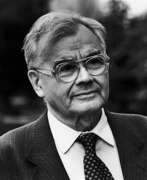

Engels Vasilyevich Kozlov (Russian: Э́нгельс Васи́льевич Козло́в), a Soviet Russian artist, was born on March 24, 1926, in Troitsko-Pechorsk, Komi Republic. Known for his contributions to the Leningrad school of painting, Kozlov specialized in genre and portrait painting, reflecting the social and cultural life of his era. His artistic journey included studies at the Yaroslavl Art College and the Tavricheskaya Art School, culminating in a significant tenure at the Leningrad Institute of Painting, Sculpture, and Architecture named after Ilya Repin.
Kozlov's works are celebrated for their vivid representation of Soviet life and have been featured in numerous exhibitions, both during his lifetime and posthumously. His legacy is preserved in various Russian museums and continues to be a point of interest at art auctions, where his pieces garner appreciation from collectors worldwide.
For those interested in exploring Engels Kozlov's unique artistic style or considering acquiring his works, subscribing to updates on new auction events and sales related to Kozlov could be highly beneficial. Stay informed about upcoming opportunities to appreciate and perhaps own a piece of this distinguished artist's legacy. Sign up here to receive these updates directly to your inbox.
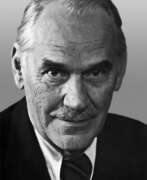

Alexander Mikhailovich Lyubimov (Russian: Алекса́ндр Миха́йлович Люби́мов) was a prominent Russian realist painter, illustrator, graphic artist, and art educator, celebrated for his significant contributions to Russian art, especially during the Soviet era. Born on February 25, 1879, in Paltsevo, Kursk Province of the Russian Empire, Lyubimov is renowned for his mastery in painting and graphics, which often depicted the societal and political landscapes of his time.
Throughout his career, Lyubimov was deeply involved in art education, teaching at prestigious institutions such as the Leningrad Institute of Painting, Sculpture and Architecture, and the Higher School of Art and Industry named after Vera Mukhina from 1934 to 1955. His pedagogical work influenced a generation of Russian artists, including notable figures like Alexander Laktionov and Yuri Neprintsev.
Lyubimov's works are housed in esteemed collections worldwide, including the State Russian Museum and the State Tretyakov Gallery, underscoring his status in the art world. His artworks, characterized by their vivid realism and complex interplay of light and shadow, continue to attract the admiration of collectors and art enthusiasts globally.
For those interested in exploring the works and legacy of Alexander Mikhailovich Lyubimov, subscribing to updates on exhibitions and sales related to his art could provide valuable insights and opportunities to acquire pieces from this influential artist. This subscription service focuses solely on new product sales and auction events related to Lyubimov, ensuring that enthusiasts and collectors are well-informed of the latest offerings.


Gavriil Kondratyevich Malysh (Russian: Гавриил Кондратьевич Малыш) was a Soviet and Russian artist of the second half of the twentieth century. He is known as a painter and watercolorist, a representative of the Leningrad school.
Gavriil Malysh worked mainly in the genres of landscape, still life and genre compositions. He became famous as a bright watercolorist, a master of lyrical landscape and decorative still life. His works are distinguished by a color palette dominated by blue, lilac and violet tonalities. His works are in numerous museums and private collections in Russia and other countries, including France, USA, Japan and Italy.


Vitold Antonovich Manastyrsky (Russian: Витольд Антонович Манастырский) was a Ukrainian and Soviet artist of the second half of the twentieth century. He is known as a painter, graphic artist, teacher, and son of the artist Anton Manastyrsky.
Vitold Manastyrsky created many works, including genre paintings, portraits, landscapes and still lifes. In his works he reflected the beauty of the Pre-Carpathian region, the life of its inhabitants, as well as portrayed his contemporaries - workers, peasants and cultural figures. He was active both creatively and in public and pedagogical spheres, he was often elected to the governing bodies of the Union of Artists of Ukraine. Many of his works are exhibited in Ukrainian museums and galleries.


Yevgeny Pavlovich Melnikov (Russian: Евгений Павлович Мельников) was a Soviet artist of the second half of the twentieth and early twenty-first centuries. He is known as a painter, teacher and poet who had a great influence on the development of the national school of modern painting in Uzbekistan.
Yevgeny Melnikov excelled in portrait painting, still life, landscape and animalistic compositions. His works were characterized by painterly temperament, energy of stroke and non-standard compositional solutions. In his works one can find both traditional elements of still life (fruits, flowers) and unusual objects (organ pipes, fish). The master also introduced into his compositions fragments from the works of his favorite French post-impressionists.
Melnikov's works are in museums and private collections in Russia, France, Germany, Holland, Sweden and many other countries.
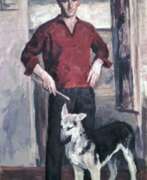

Leonid Yakovlevich Mezheritski (Russian: Леонид Яковлевич Межерицкий) was a Soviet, Ukrainian and Israeli artist of the second half of the twentieth and early twenty-first centuries. He is known as a painter who specialized in oil painting, a representative of the South Russian (Odessa) school.
Leonid Mezheritski created mainly plein air landscapes, and also worked in the genres of portraiture and still life. His style was based on the coloristic systems of French Impressionism and Post-Impressionism. His works can be found in state art museums in Ukraine and private collections in various countries, including the United States, Canada, Germany, England, Israel and Russia.
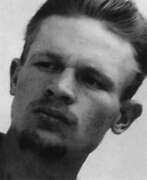

Georgy Moiseevich Moroz (Russian: Георгий Моисеевич Мороз) was a Soviet and Russian artist of the second half of the twentieth and early twenty-first centuries. He is known as a painter, a representative of the Leningrad school, whose work included landscapes, still lifes, genre compositions and portraits.
Georgy Moroz, having started participating in exhibitions since 1963, traveled extensively throughout the USSR and foreign countries, including Italy, the USA and Japan. His works are in museums and private collections in Russia, Japan, Italy, Germany, Holland, France, Sweden, USA and other countries.
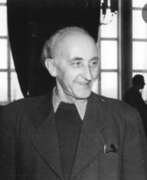

Oskar Nerlinger, born on March 23, 1893, in Straubenhardt, Germany, was a notable German painter whose career spanned the early to mid-20th century. His work was part of the painting event in the art competition at the 1932 Summer Olympics, highlighting his recognition in both the art and sports communities. He also worked under the pseudonym Nilgreen.
Nerlinger's art primarily focused on painting, and he became known for his unique style and contributions to the art world during a time of significant cultural and political change in Germany. His artworks reflected the trends and movements of his era, capturing the essence of the period in which he lived and worked.
While specific details about Nerlinger's most famous works or their presence in museums and galleries are not readily available, his participation in the 1932 Summer Olympics art competition suggests that his work received considerable recognition. This would be of particular interest to collectors, auctioneers, and experts in art and antiques, especially those with a focus on early 20th-century German art.
For those interested in exploring more about Oskar Nerlinger's life, work, and impact on the art world, further research and exploration into art history sources and museum collections that feature German art from this period would be beneficial.
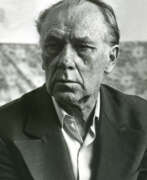

Sergei Ivanovich Osipov (Russian: Сергей Иванович Осипов) was a Soviet artist of the second half of the twentieth century. He is known as a painter and teacher, a representative of the Leningrad school of painting.
According to critics, Sergei Osipov reached the peak of his creativity in the 1970s and early 1980s, when he created a number of outstanding works in the genres of landscape and still life. His favorite subject was nature and views of old Russian towns in his native Tver land. His paintings are characterized by laconism, conventionality of forms, and expressiveness of images, which is reminiscent of the art of Old Russian masters. His works left a significant trace in Leningrad painting of the 1970s and gave it an identity.
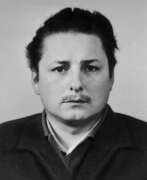

Victor Alexandrovich Otiev (Russian: Виктор Александрович Отиев) was a Soviet and Russian artist of the second half of the twentieth century. He is known as a painter, landscape painter and animalist.
Victor Otiev worked in a variety of genres, including portraits, landscapes and studies from life. One of his favorite subjects was equestrianism. His style evolved from broad, energetic brushstrokes in his works of the 1950s and 1960s to a decorative and graphic style later in his career. In the works of the 1980s Otiev focused on color, decorative planes and rhythmic organization of space.
The master's works are in museums and private collections around the world.
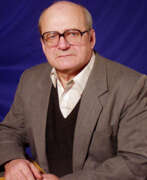

Anatoly Nikolaevich Petrov (russisch: Анатолий Николаевич Петров) was a Soviet and Russian artist of the last third of the twentieth and early twenty-first centuries. He is known as a watercolorist-landscape painter.
Anatoly Petrov became famous for his art of recreating subtle color transitions. Having started as a designer and project artist, he soon realized that his real vocation is pure creativity. His works are mainly devoted to nature and still life. The master's works are in various museums and private collections around the world, including Russia, the United States, England, Germany, Japan, China, Israel, Poland, France and other countries. He was also a member of the UNESCO International Association of Fine Arts.
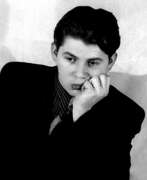

Nikolai Matveyevich Pozdneyev (Russian: Николай Матвеевич Позднеев) was a Soviet artist of the mid-twentieth century. He is known as a painter, a master of landscape, portrait and genre painting.
Nikolai Pozdneyev became famous in 1959 with one of his first genre compositions, "Spring Day". In the late 1950s and early 1960s he became one of the leading Leningrad artists, a well-known colorist and master of composition. His works stood out for their original bold layout and ability to convey everyday scenes in poetic images.
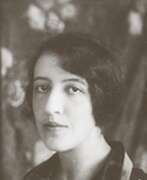

Tatiana Isidorovna Rusakova, née Kuperwasser, was a Soviet avant-garde artist and graphic artist.
Tatiana Rusakova studied at the Leningrad VKhUTEMAS-VKhUTEIN in the painting department under Kuzma Petrov-Vodkin and Osip Braz. In 1926-1932 she was an active member of the Circle of Artists association. Since 1946 - a member of the Union of Soviet Artists.
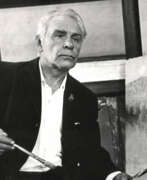

Boris Yakovlevich Ryauzov (Russian: Борис Яковлевич Ряузов) was a Soviet and Russian artist of the second half of the twentieth century. He is known as a landscape painter and teacher.
Boris Ryauzov was the first artist working in Siberia to be elected a full member of the USSR Academy of Arts. His works, including a series of paintings of places associated with Lenin, were awarded the State Prize of the RSFSR. Ryauzov's expositions were also recognized outside the USSR - in Poland, FRG, Japan, Canada and other countries. He is included in the world art rating and his works are kept in museums and private collections in many countries.
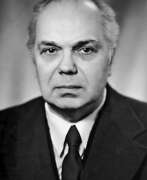

Alexander Mikhailovich Semyonov (Russian: Александр Михайлович Семёнов) was a Soviet artist of the second half of the twentieth century. He is known as a landscape painter, a representative of the Leningrad school of painting.
Even at the beginning of his career Alexander Semyonov chose the main direction of his work: urban landscapes of Leningrad - streets, bridges, embankments. He mastered the plein air, creating nature studies and paintings with bright colors and precise color harmony. His artistic style was formed by the mid-1960s, distinguished by freshness, immediacy and the art of conveying the first impression of cityscapes.


Ivan Nikolayevich Shulga (Russian: Иван Николаевич Шульга) was a Ukrainian Russian and Soviet artist of the first half of the twentieth century. He is known as a master of painting and drawing and a teacher. His name is included in the "Unified Art Rating of the world's 10,000 best artists" and in the list of the 100 most outstanding artists of Ukraine.
Ivan Shulga worked in different genres: he painted portraits, genre paintings, landscapes (marine, landscape, architectural, industrial), created still life paintings, panels, drawings for art postcards, political posters. His artistic legacy also includes pictures in the genre of nude and historical genre. The artist also illustrated magazines and books, designed theatrical sets.
Shulga worked in watercolor, pencil drawing, gouache, ink and sanguine, pastel, oil and tempera painting.
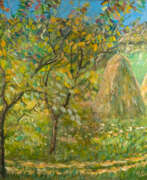

Pyotr Dorofeyevich Slyota (Russian: Пётр Дорофеевич Слёта) was a Ukrainian Soviet artist of the mid-twentieth century. He is known as a painter, famous for his thematic paintings and landscapes.
In his works, according to critics, Pyotr Slyota showed the best features of Soviet art - patriotism, humanism, love for nature. In his work an important place is occupied by works devoted to the history of Ukraine. In landscape works from different countries where the artist visited ("Street in Košice", "Charles Bridge", "Paris. Notre Dame"), he managed to reveal the national and social features of these cities.


Nikolai Fyodorovich Smolin (Russian: Николай Фёдорович Смолин) was a Russian and Soviet artist of the first half of the twentieth century. He is known as a portrait painter.
Throughout his career, Nikolai Smolin painted landscapes, still lifes, and paintings with topical subjects on historical and domestic themes, but he became most famous for his portraits. When creating them, the artist combined realism with the impressionist school of his teacher Nikolai Fechin.
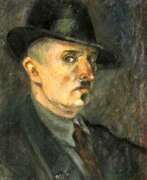

Mikhail Petrovich Staniouta (Russian: Михаил Петрович Станюта) was a Belarusian Soviet artist. He is known as a painter, graphic artist and teacher.
Mikhail Staniouta worked mainly in easel painting in the genres of thematic painting, portrait, landscape, still life. His narrative and thematic paintings were distinguished by their topicality, expressiveness of composition and drawing, color saturation. The artist also worked in graphics, which in his creative heritage is represented, in particular, by sketches of self-portraits of the master.
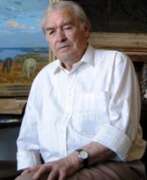

Pavel Fyodorovich Sudakov (Russian: Павел Фёдорович Судаков) was a Russian Soviet artist of the second half of the twentieth and early twenty-first centuries. He is known as a painter, a representative of socialist realism, a laureate of the Stalin Prize of the III degree.
Pavel Sudakov studied in the art studio of the Moscow Union of Artists, during his studies he went to the front, served in the people's militia. Upon his return, he headed the art studio of the border troops. He traveled extensively, creating works on historical, portrait and landscape themes. The master was a member of many art organizations. His paintings are kept in Russian and foreign museums.


Mikhail Arkadyevich Suzdaltsev (Russian: Михаил Аркадьевич Суздальцев) was a Soviet and Russian artist of the second half of the twentieth century. He is known as a painter, heir to the traditions of Russian plein air painting.
Mikhail Suzdaltsev participated in exhibitions since 1948. He lived in Moscow, specialized in thematic and historical paintings, landscapes. Among the famous works of the artist are "A. M. Gorky and Y. M. Sverdlov on the Volga", "Power to the Soviets - Peace to the Peoples!", "The First Paycheck", "March. Moscow Region", "Volga. Windy Day". His works are kept in a number of Russian and world museums and private collections in Russia, Japan, USA, England, Germany and Norway.


Nikolay Alexandrovich Sysoev (Russian: Николай Александрович Сысоев) was a Soviet and Russian artist of the second half of the twentieth century. He is known as a painter and graphic artist, heir to the traditions of the Russian realist school.
Nikolay Sysoev became famous as a portraitist, landscape painter, genre painter, master of still life. His oeuvre includes a picture "Leniniana". Among his most famous works are "Lenin and Krupskaya among the peasants", "Lenin on the Communist Saturday", "Collectivization", "Nationwide Holiday", "Mother" and others. Sysoev also founded an art gallery in the Lipetsk region of Russia, named in his honor.
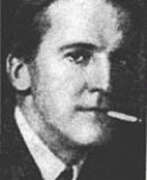

Nikolay Borisovich Terpsikhorov (Russian: Николай Борисович Терпсихоров) was a Soviet artist of the first half of the twentieth century. He is known as a painter, one of the most notable representatives of socialist realism.
Nikolay Terpsikhorov and his art were closely connected with the revolution and the history of the USSR. He created landscapes, portraits, watercolors, posters. His works devoted to revolutionary events, the happiness of Soviet childhood, the struggle against bourgeois vestiges, etc. were especially famous. The artist's works are kept in famous Russian museums, including the Tretyakov Gallery and the State Russian Museum, as well as in regional and foreign collections.
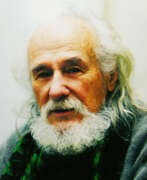

Victor Ivanovich Tolochko (Russian: Виктор Иванович Толочко) was a Soviet and Ukrainian artist of the second half of the twentieth and early twenty-first centuries. He is known as a painter, a decorated participant of the Great Patriotic War, a master of landscape, still life, battle and historical genres.
When working in the historical genre Victor Tolochko tried to live in the historical atmosphere. Working on the painting "Defenders of the Brest Fortress", he lived in the fortress for six months and created more than 50 sketches and sketches. In addition to the military theme, the master's life-affirming landscapes were also highly appreciated by critics.


Victor Grigorievich Tsyplakov (Russian: Виктор Григорьевич Цыплаков) was a Soviet artist of the second half of the twentieth century. He is known as a painter, master of thematic painting, landscape painter, portraitist, and teacher.
Victor Tsyplakov created famous thematic works of the historical genre, including "Gorky on the Volga", "V. I. Lenin", "Doprosy. I. Lenin", "Interrogation of Zoya Kosmodemyanskaya". He was among the few artists entrusted to make sketches of Stalin's funeral. In the work of the master especially stand out landscapes - he masterfully depicted nature, created poetic images and played with light. In portraits of models and close people, the artist conveyed a subtle psychological characterization and a sense of friendly sympathy.


Nikolay Andreyevich Tyrsa (Russian: Николай Андреевич Тырса) was a Russian and Soviet graphic artist and painter of the first half of the 20th century. He is known as a brilliant illustrator and one of the founders of the Leningrad school of book graphics. Tyrsa's paintings are diverse in genre: among them there are many portraits, still lifes, landscapes, nudes, illustrations of children's and classical literature. His works are distinguished by soft tone, blurred outlines, delicacy of colors, harmonious color combinations, lyricism and observation.
Nikolay Tyrsa preferred graphic art and watercolors until the 1930s, and then oil painting. He was a follower of the traditions of the "World of Art" association of artists. He was also one of the brightest representatives of the Leningrad Landscape School, whose followers painted chamber and contemplative cityscapes. The influence of the French Impressionists can be traced in the work of this group.
Tyrsa designed many children's books, and in his later years he illustrated classical literature - works by Alexander Pushkin, Mikhail Lermontov, and Leo Tolstoy. Shortly before his death, Nikolai Tyrsa worked with Vera Mukhina to design glass vases, decanters and glasses.
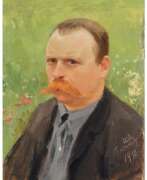

Ivan Alexeyevich Vladimirov (Russian: Иван Алексеевич Владимиров) was a Russian painter and graphic artist, known for his vivid and often stark depictions of the Russian Revolution and its aftermath. Born on January 10, 1870, in Vilnius, Vladimirov became a prominent war artist, documenting the turbulent events of early 20th-century Russia through his art.
Vladimirov's artistic journey began with formal studies at the Vilna Drawing School and later at the St. Petersburg Academy of Arts. His early works focused on battle scenes and everyday life, showcasing his realistic style and attention to detail. During the Russo-Japanese War and World War I, he served as an artist-correspondent, capturing the brutal realities of war.
His most notable works were created during and after the Russian Revolution. Paintings like "On the Streets of Petrograd" and "Hungry Times in Petrograd" portray the harsh conditions and social upheaval of the era. Vladimirov's art provides a critical lens on the revolution, illustrating both the triumphs and tragedies of the period. His works are housed in various collections, including the Williamson Art Gallery & Museum.
To stay updated on new exhibitions and auction events related to Ivan Alexeyevich Vladimirov, sign up for our newsletter. You'll receive timely alerts on new product sales and special events related to this influential artist.
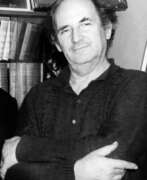

Nikolai Ivanovich Volynets (Russian: Николай Иванович Волынец) was a Soviet and Belarusian artist of the second half of the twentieth and early twenty-first centuries. He is known as a painter who worked mainly in the genres of landscape and portrait, a follower of the Vitebsk school of painting.
Nikolai Volynets wrote landscapes from nature by the technique of large brushstroke. Models for his portraits became, as a rule, heroes of war and labor, political and creative figures and ordinary citizens, contemporaries of the artist. Some portraits he created using leaves of trees and feathers of birds. At the end of his life, the artist turned to religious themes, and participated in the painting of walls in temples.
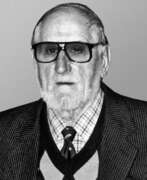

Rostislav Ivanovich Vovkushevsky (Russian: Ростислав Иванович Вовкушевский) was a Soviet and Russian artist of the second half of the twentieth century. He is known as a painter, muralist and teacher, a representative of the Leningrad school.
Rostislav Vovkushevsky actively exhibited his works since 1949. He worked in both easel and monumental painting, his work included still lifes, portraits, landscapes and genre compositions. Important works of the artist were monumental panels, mosaic compositions and ceremonial curtains for auditoriums. His style was distinguished by decorative elements, clear silhouettes and rich color, as well as rhythmic organization of the canvas.
His works are in museums and private collections around the world.
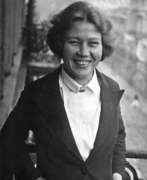

Maria Abramovna Zubreeva (Russian: Мария Абрамовна Зубреева) was a Soviet artist of the twentieth century. She is known as a painter, graphic artist, decorator, representative of the Leningrad school of painting, and one of the first members of the Leningrad Union of Artists. Her work encompassed a variety of genres, including portraits, landscapes, still lifes and genre compositions. She was engaged in both easel and monumental painting, interior decoration, and book illustration. The artist often worked in the technique of watercolor and tempera painting.
Maria Zubreeva, together with her husband, artist Sergey Zakharov, spent many years in Tajikistan, where she made a significant contribution to the art of this region. Her watercolor portraits and eastern landscapes remain the most interesting part of her artistic heritage.
